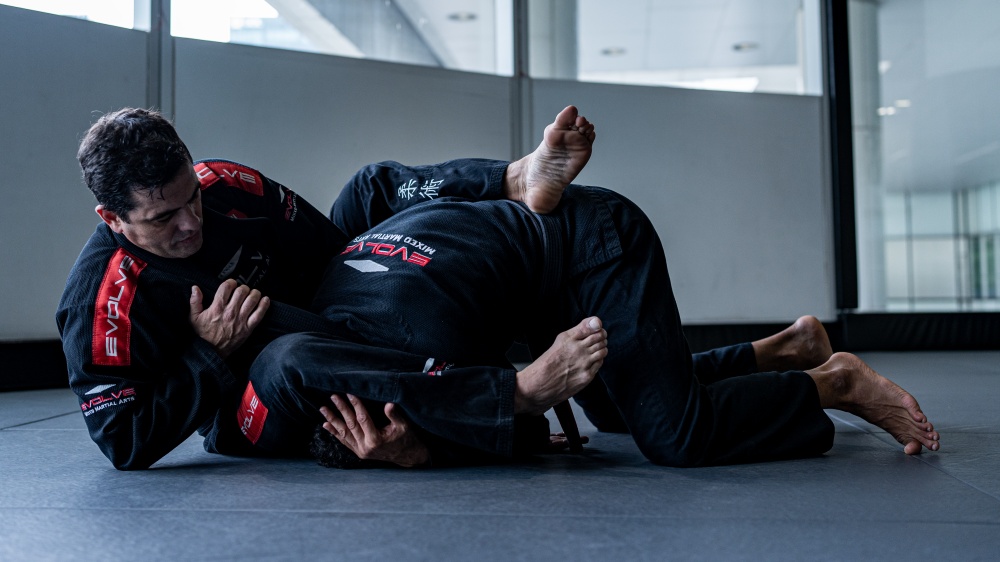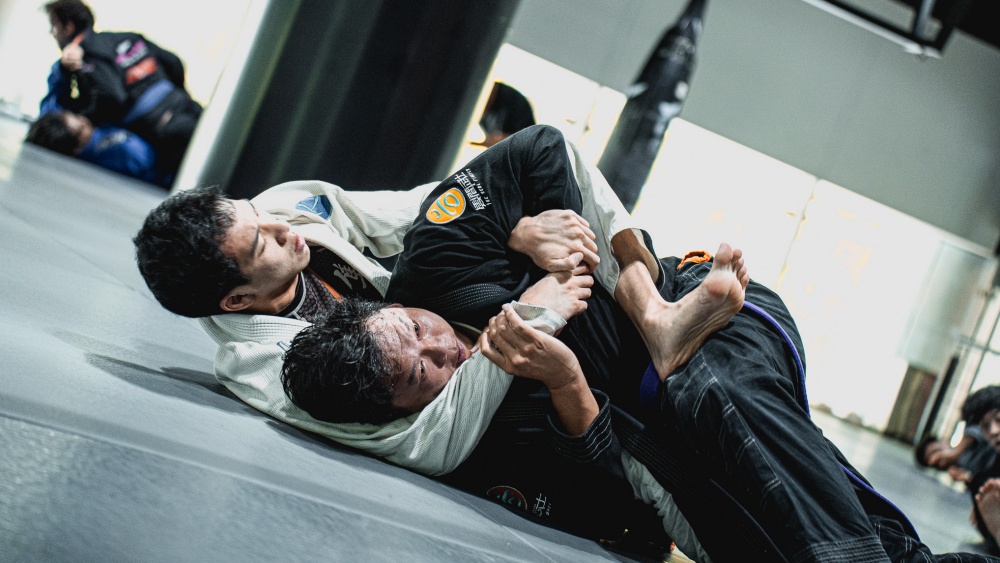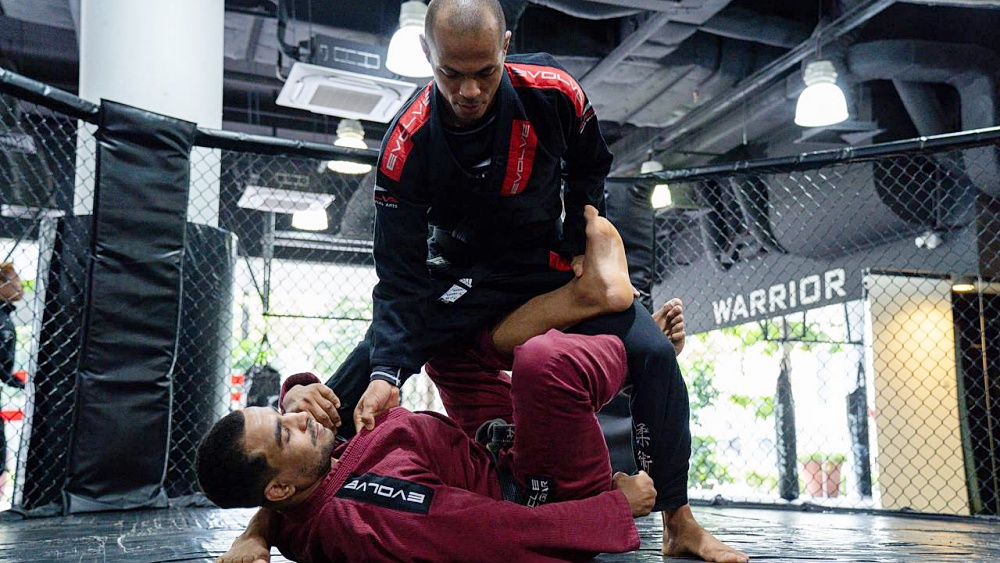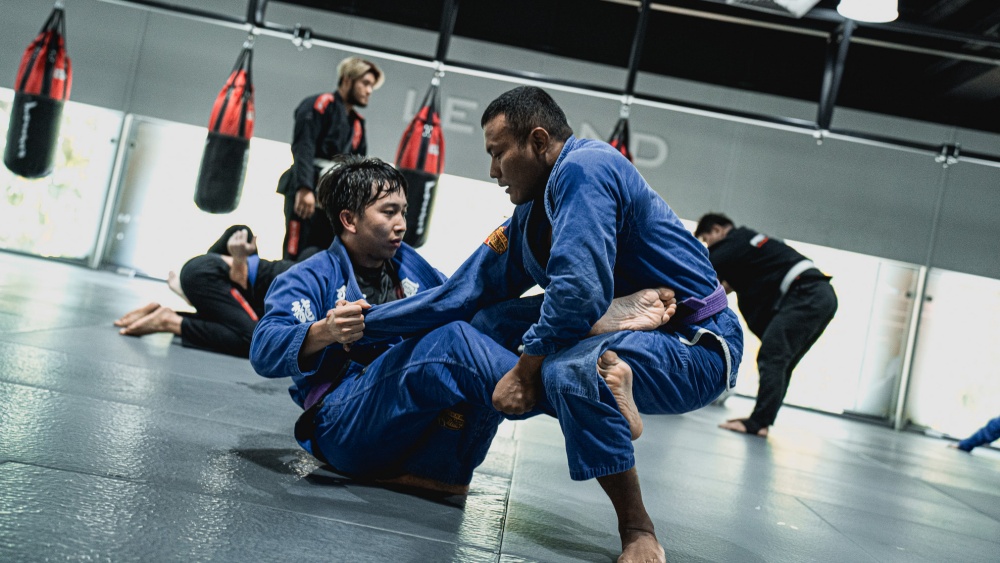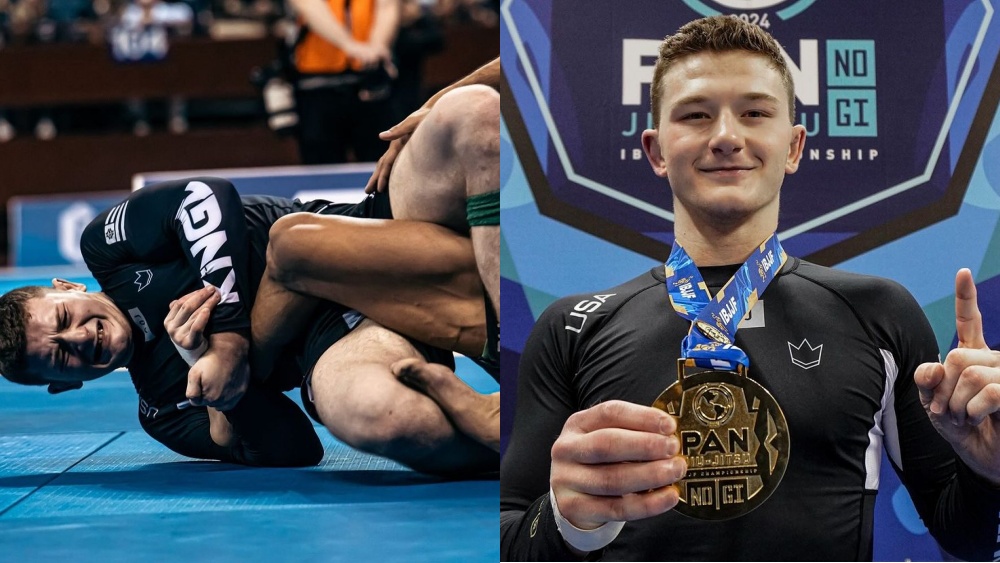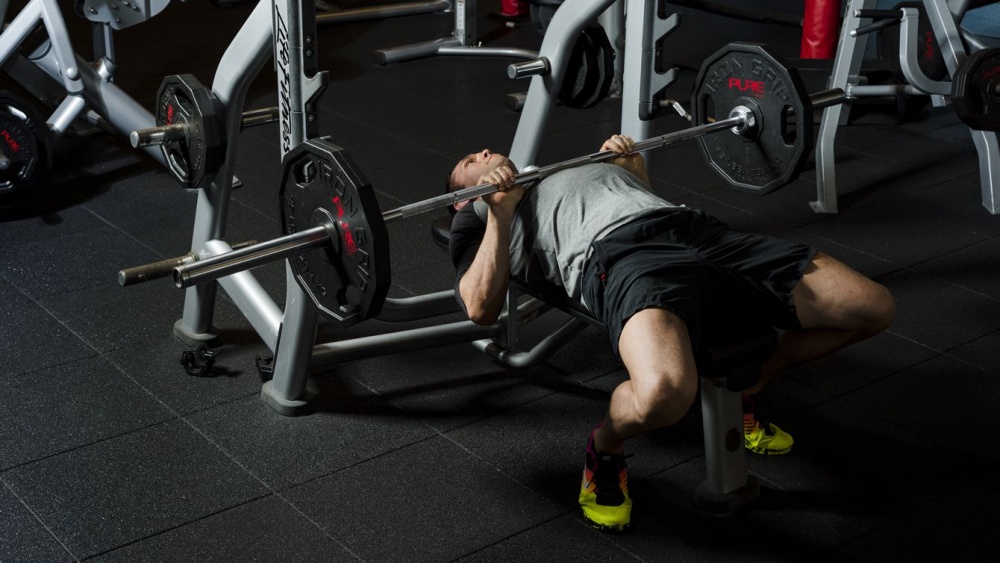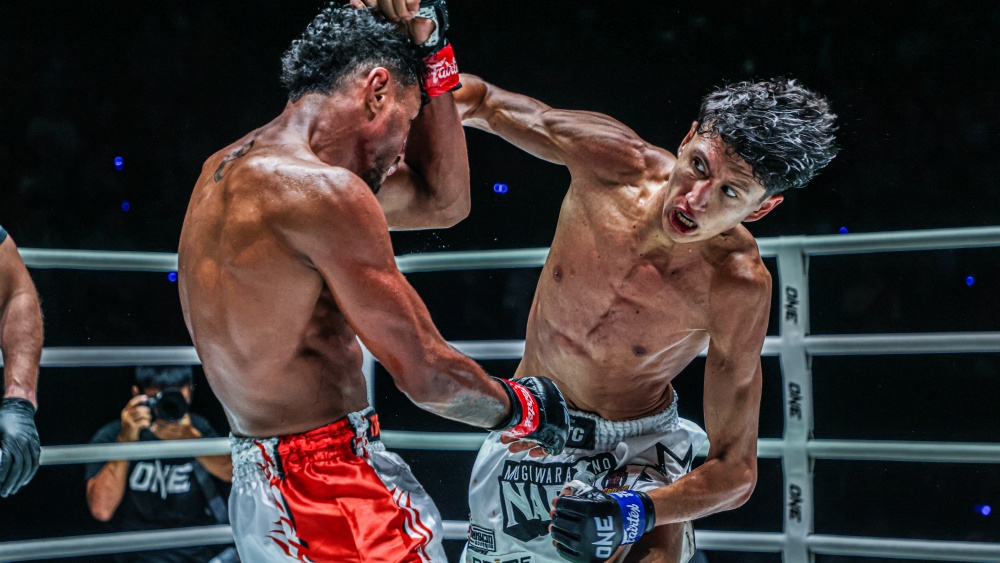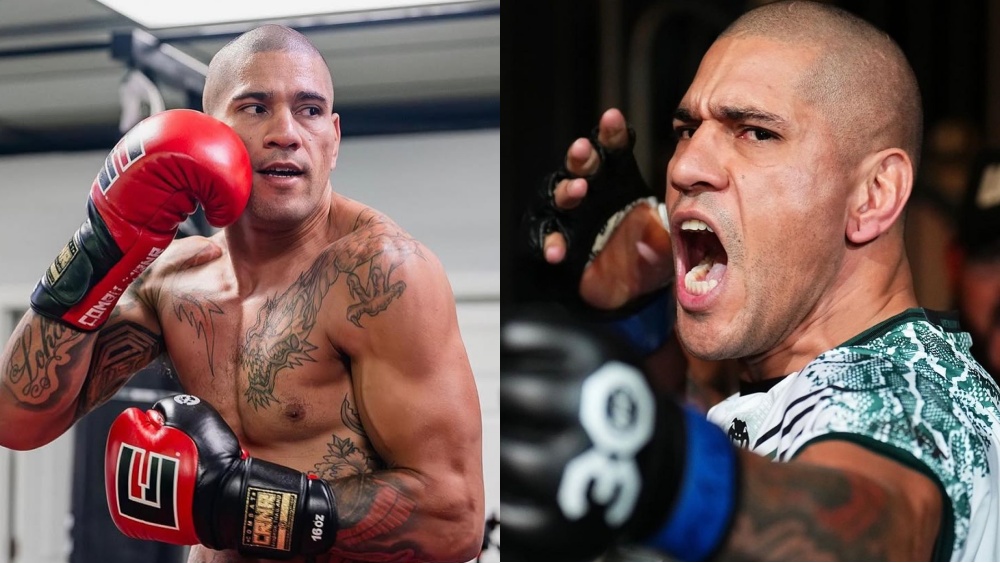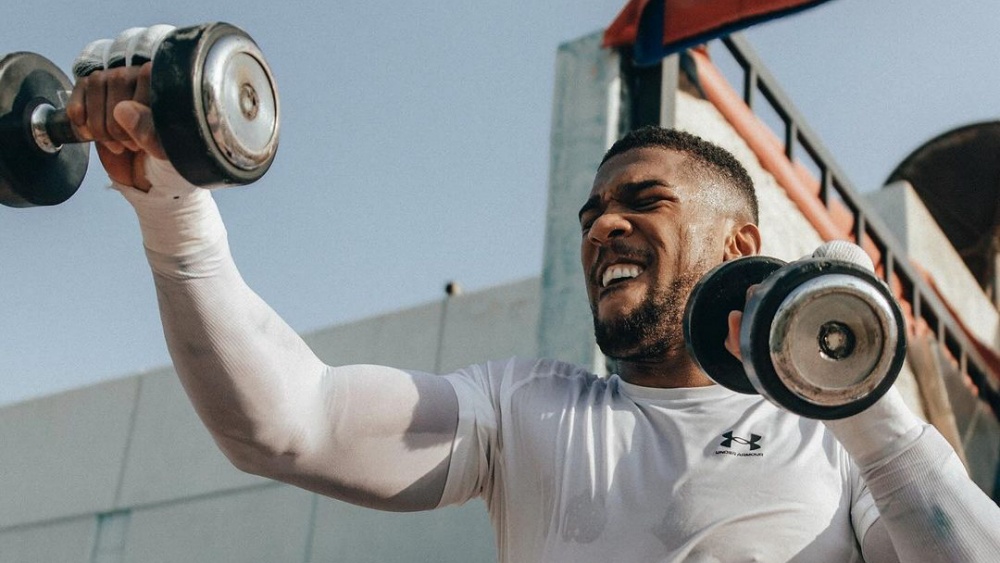You probably heard the adage that the best defense is a good offense. In Brazilian Jiu-Jitsu, a sound defensive game creates opportunities for offensive attacks. Starting from the standup, defending a takedown with a sprawl allows you to apply a front headlock, which you can use to spin and take the opponent’s back or to execute a choke.
Some of the most effective chokes, like the guillotine and Peruvian necktie, are applied from the front headlock position. This article will talk about a powerful necktie choke variation called the Peruvian necktie.
What Is The Peruvian Necktie?
The Peruvian necktie is one of the many necktie choke variations in BJJ. It was created by a former UFC welterweight fighter named Tony De Sauza. After practicing the technique and proving its effectiveness, many grapplers have added the choke to their arsenal, giving rise to its popularity.
This choke is usually applied from the front headlock after successfully defending a takedown by sprawling. After the sprawl, it is best to apply the choke with head and arm control against the opponent. It is done by trapping the opponent’s head and arm using both hands with an S-grip or gable grip while your leg is thrown over behind the opponent’s neck (for downward pressure) while the other leg is thrown across the back.
The Peruvian necktie is one of the few head and arm chokes that use your legs for the submission, using all four limbs to control the opponent’s neck, head, and upper body. Most front headlock variations focus on squeezing, rotating, and twisting movements, while the Peruvian necktie is all about applying pressure with the limbs.
How To Perform The Peruvian Necktie
WATCH: How To Do A Peruvian Necktie!
https://www.evolve-mma.com
Posted by Evolve MMA on Sunday, April 23, 2017
To start, understand that being defensively strong in BJJ is important. According to John Danaher, defense forms the foundation from which you become offensively strong, and the pathway to attack is through your confidence in your defense.
You should have the ability to get out of any pin and submission holds so that the opponent can never impose their will upon you, so you can instead impose yours upon them. With the philosophy of Danaher, it can be applied to how normally the Peruvian necktie is initiated.
As mentioned above, it is usually applied after a successful takedown defense, although you can execute the Peruvian necktie from both defensive and offensive transitions. Forcing the opponent to turtle not only comes from defending a takedown by sprawling. You can also force them to turtle by attacking with snap downs from standup or attacking relentlessly from the top position, forcing them to turtle up.
Even though the better option when the opponent turtles from mount or side control is to take their back, submissions like the Peruvian necktie can quickly end the match in a snap. Without further ado, let’s look at the video demonstration by reigning ONE Women’s Atomweight World Champion Angela Lee from the Evolve Fight Teamhow one how to execute the Peruvian necktie.
The Peruvian necktie is your best option if you can’t secure your grip but can connect your hands in the front headlock position. From the top turtle position, trap their head and arm on one side using both hands and do a gable grip underneath their neck. Even if your arms are extended and have no squeezing or downward pressure behind the opponent, you can still secure this choke.
Now that you are in the front headlock position and have trapped the opponent’s head and left arm, sit up and slowly walk your right leg up towards their head until your hamstring reaches the back of their neck. The hamstring behind the neck will generate the downward force, bringing their chin closer to your wrist, which is connected underneath the neck.
Drop down by putting your weight over the back of their head and fall towards your right hip. As you fall to your right hip with your right glute landing on the mat, you should have enough space to move your left leg, allowing you to throw it over the top across their back. Return to the center and extend your right leg to finish the choke.
Peruvian Necktie In The Gi
The additional gi grip can help you set up some of the strongest chokes in BJJ. Submissions like the bow and arrow choke and Peruvian necktie are awesome options because the gi can generate a lot of force by removing the slack across an opponent’s neck.
Starting from the front headlock position, assuming that you are choking the opponent on their left side, undo your lapel and reach for the tip of the lapel using your right hand. In case the opponent still has your leg, continue to sprawl. Slide your right hand and feed the lapel to your left hand, placed below the opponent’s left arm.
Move forward and place your left knee next to the opponent’s left shoulder and your right leg on the back of their neck. Sit down and throw your left leg behind their back. To finish, stretch your legs and pull the lapel to tighten the choke.
Final Thoughts
The Peruvian necktie is one of the most used necktie choke variations because it is easy to apply and is proven to be effective. As with all chokes, the probability of getting a tap depends on how you position your grips against the opponent’s neck.
The Peruvian necktie might feel awkward at first but keep at it, and you’ll surely have a potent weapon in your hands. Remember to work on your defense so you can also apply submissions in transition from different positions.
You may also like:
